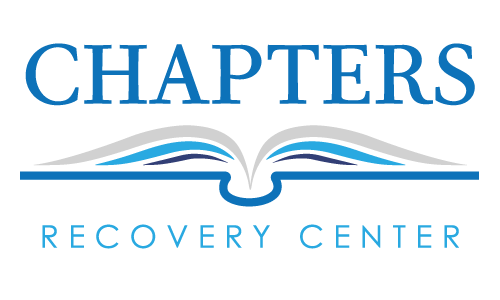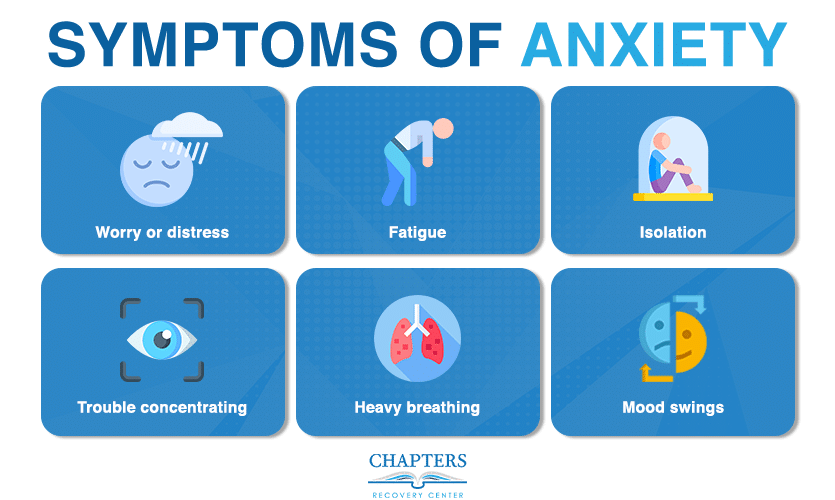If you are simply wondering, ‘can you overdose on Suboxone?’ – the answer is yes. But if Suboxone is taken as directed by your medical provider, overdosing is unlikely because the ingredient buprenorphine has a “ceiling effect.” The other ingredient, naloxone, helps prevent misuse. Overdose is more likely to happen to people who take Suboxone and who have never used benzodiazepines or some other drugs.
Even though Suboxone is highly effective for treating opioid addiction, or opioid use disorder (OUD), it still has the potential for abuse. If you’re not using it correctly, at too high of a dose, or without a prescription, you are more likely to overdose. Some people even inject it which allows them to bypass its time-release feature. This makes overdose and other side effects more possible.
As with any medication of abuse, using a medication in a way other than it’s meant to be used increases the risk of addiction and overdose. However, when people do overdose on Suboxone, it is usually because they are combining it with sedatives such as benzodiazepines, which also slows your breathing.
So, What is Suboxone?
Suboxone is a combination medication that contains buprenorphine and naloxone. It’s one of the main medications used to treat opioid addiction, or opioid use disorder (OUD). Using medication to treat OUD has been shown to lower the risk of a fatal overdose by about 50%. Similarly, the risk of nonfatal overdoses is also reduced. They can also be traumatic and dangerous medically.
A large majority of physicians, addiction experts, and advocates agree that Suboxone saves lives. So much that the U.S. Government has been loosening the requirements needed for doctors and nurses to “get waivered” to be able to prescribe Suboxone in an attempt to increase its availability as the number of opioid deaths rises.
How Does Suboxone Work?
Like naloxone and buprenorphine, it works by attaching to the same receptors in the brain as other opiates. By doing this, it:
- dulls the feeling of intoxication,
- prevents cravings, and
- allows people to transition back to a life of normalcy and safety.
What is Buprenorphine?
Buprenorphine is one of the ingredients of Suboxone. It’s a medication that the FDA has approved to treat OUD as part of medication-assisted treatment (MAT). Buprenorphine is the first medication for opioid use disorder that can be prescribed or dispensed in the doctor’s office. The same as any medicine used in MAT, buprenorphine should be prescribed as part of a comprehensive treatment plan. This should include counseling and other behavioral therapies to provide a “whole-person” treatment approach.
What is Naloxone?
Naloxone is the other ingredient in Suboxone. It has been approved by the FDA to be used to reverse an opioid overdose rapidly. It is an opioid agnonist, which means that it also binds to opioid receptors and can reverse and block the effects of other opioids, such as morphine, heroin, and oxycodone. If given when a person is showing signs of opioid overdose, it is a temporary treatment as its effects don’t last long. It’s vital to get medical attention as soon as possible after giving naloxone.
What Are The Symptoms of Suboxone Overdose?
Suboxone is a safe medication when used properly, especially in addiction recovery. It is important to do so for your safety and sobriety, but, the same as any medication of abuse, using it in any way other than intended on the label increases the risk of addiction and overdose. This means that if you take a fatal dose of Suboxone, your body may not be able to get enough oxygen into the bloodstream. If enough time passes without sufficient oxygen, you can lose consciousness, stop breathing, and even die.
Symptoms of a Suboxone overdose are similar to any other opioid drug and may include:
- Abdominal pain
- Irritability, anxiety, and mood swings
- The appearance of being drunk or drugged
- Depressed or shallow breathing
- Problems concentrating and remembering
- Loss of physical coordination
- Nausea and vomiting
- Feeling sleepy
- Slowed heartbeat
- Seizures
- Coma
- Death
What Should You Do if There’s an Overdose?
If you believe that your or someone you know is overdosing on Suboxone or any other medication:
- Call 911 immediately
- Follow any medical guidance provided. In most states, EMTs carry naloxone (Narcan) on them. It can be administered to reverse the opioid overdose effects
- If you have naloxone, use it, because it will temporarily stop the overdose
Remember, naloxone’s effects are very short-acting, and its effects will wear off. You need medical attention after receiving naloxone. This way, a medical professional can monitor the affected person until the Suboxone wears off.
Reduced Opioid Tolerance and Overdose
Suboxone is meant only for people who grapple with opioid addiction. Because of this, people who are prescribed Suboxone are believed to already have a high tolerance for opioids. Tolerance develops when you need to take increasingly high amounts of an opioid to feel the euphoric effects experienced when you first started using. For example, someone addicted to prescription opioids can develop a tolerance and need to take a number of pills at once. They may need to use a stronger opioid like heroin.
Individuals with a drug tolerance are usually also dependent. They experience withdrawal symptoms when they stop taking the drug. After a person tapers off a drug and remains sober for any length of time, their dependence and tolerance on the substance start to decrease.
People who once got high from two pills may now overdose if they take that much. People who don’t have a tolerance for opioids should not take Suboxone. Low to non-existent tolerance increases your risk of overdose and other serious complications because your body isn’t used to having high levels of opioids in the system.
Drug Interactions that Increase Overdose Risk
Using substances that negatively interact with Suboxone increases your chance of overdosing on Suboxone. Some of these medications are:
- Benzodiazepines like Xanax, Valium, and Klonopin
- Barbiturates
- Alcohol
- Hormonal contraceptives
- Antidepressants
- Phenobarbital
- Cocaine
- Ketamine
- Meth
- Synthetic cannabinoids
Combining other depressant drugs with Suboxone can have a compounding effect. Benzodiazepines, alcohol, and barbiturates are considered the most dangerous drugs to mix with Suboxone.
Suboxone Withdrawal
Symptoms of withdrawal from Suboxone typically last about a month. However, this may vary depending on:
- The duration of your use
- The dosage
- The use of alcohol
- The presence of medical conditions
- Other mental health disorders
Withdrawal effects of Suboxone are similar to other opioids if you quit “cold turkey” (suddenly). Physical symptoms usually begin within 24 hours of the last dose and last about ten days. They include:
- Nausea and vomiting
- Headaches
- Muscle aches and pains
- Depression
- Mood swings
- Anxiety
- Chills
- Insomnia
Depression and drug cravings may last for a month or more. Because Suboxone is long-acting, the onset of withdrawal is usually delayed and lasts longer than other opioids.
Five Myths About Using Suboxone to Treat OUD
You aren’t really recovering if you’re on Suboxone
It depends on how you define recovery. The 1930s-era abstinence-based models of addiction care are giving way to more modern ideas of recovery. The use of medications such as Suboxone that help regulate your brain chemistry is increasingly being used as addiction is being viewed as a medical condition. To state that someone isn’t really in recovery if they’re using Suboxone is stigmatizing to those people and is not the medical reality.
People often misuse Suboxone
Suboxone can be misused, just like any opiate. But, since it is only a “partial” agonist (meaning it binds to a receptor and causes the same action as the substance that usually binds to the receptor) it causes much less of an effect than heroin or oxycodone. However, people may use Suboxone to help manage their withdrawal or get themselves off heroin or fentanyl. If it were more available to the people who need it, they wouldn’t have to self-medicate. This myth just blames the victim.
It’s just as easy to overdose on Suboxone as with other opiates
It’s very difficult to overdose on Suboxone alone when compared to other opiates. Because it’s a partial receptor agonist, there’s a limit to how much the opioid receptors can be activated.
Suboxone isn’t a real addiction treatment if you aren’t also getting therapy
The ideal addiction treatment should include medication as well as:
- therapy,
- recovery coaching,
- support groups,
- housing assistance, and
- employment support
Still, that doesn’t mean that one element, without the others, doesn’t make up a valid treatment for addiction. Due to flaws in our healthcare system and the shortage of qualified providers, only about 10-20% of people with OUD get any treatment that qualifies as adequate. Treatment with Suboxone is effective but even more so with additional supports such as therapy, etc.
Suboxone should only be used for a short time
Experts have different views on how long Suboxone treatment should last, but there isn’t any evidence that Suboxone should only be taken for a short period of time instead of the long term. It compares to the way a person would manage their diabetes with insulin for the long term.
Is Suboxone the Same as Methadone?
Suboxone and Methadone are different medications, but both are used to help people fight opioid addiction. The first treatment after a medically-supervised opioid detox is frequently started with Suboxone or Methadone. Methadone is used to ease cravings and prevent unpleasant withdrawal symptoms.
Addiction and Stigma
Addiction is a complex disease that needs to be handled with compassion and modern medical care. One of the biggest obstacles to getting treatment for addiction is the stigma people have to deal with. Fortunately, the perception in society is slowly starting to turn away from the outdated view of addiction as a moral failing, toward a more realistic, humane view. Throwing out the myths and misinformation about addiction, and replacing them with up-to-date, evidence-based treatments is an important step in the improvement of addiction treatment.
Treatment for Opioid Use Disorder
If you or a loved one have an opioid addiction, the most important thing you can do is get professional treatment. OUD is a dangerous condition and a difficult addiction to try to quit on your own. The professionals at Chapters Recovery Center have the experience and the programs available to give you the best opportunity for a lifelong recovery.
We can provide you with the support and medical supervision that is so critical to the difficult first stage of withdrawal and detox. This assures that you are prepared to take the next step into treatment. And because we know that people have different needs in recovery, Chapters has dedicated programs for men only and women only. And that’s just the start. We can provide you with medication-assisted treatment, dual diagnosis treatment, and a range of therapy options.
If it sounds like a lot, it is. This is what you need and deserve if you truly want to make a lasting change in your life, or the life of someone you care about. Give us a call today, and let’s talk about it.
References
https://www.health.harvard.edu/blog/5-myths-about-using-suboxone-t








